
Sparganium (bur-reed) is a genus of flowering plants, described as a genus by Linnaeus in 1753. It is widespread in wet areas in temperate regions of both the Northern and Southern Hemispheres. The plants are perennial marsh plants that can grow to 3.5 m, with epicene flowers.

Caperonia is a genus of plants of the family Euphorbiaceae first described as a genus in 1825. The genus is native to tropical and subtropical America and Africa.
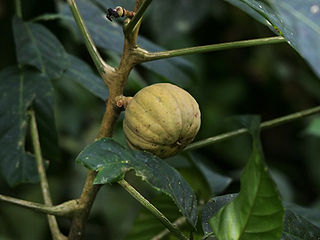
Hura is a genus of trees in the family Euphorbiaceae described by Carl Linnaeus in 1753. It is native to South America, Mesoamerica, and the West Indies.
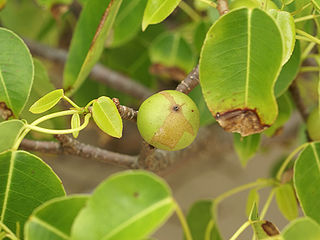
Hippomane is a genus of plants in the Euphorbiaceae described by Linnaeus in 1753. It is native to the West Indies, Central America, Mexico, Florida, Venezuela, Colombia, and Galápagos.
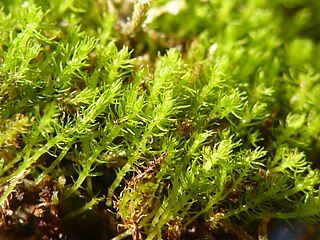
Takakia is a genus of two species of mosses known from western North America and central and eastern Asia. The genus is placed as a separate family, order and class among the mosses. It has had a history of uncertain placement, but the discovery of sporophytes clearly of the moss-type firmly supports placement with the mosses.

Allium textile is a common species of wild onion found in the central part of North America.
Bryoxiphium madeirense is a species of moss in the Bryoxiphiaceae family. It is endemic to the Island of Madeira in the North Atlantic, part of Portugal.
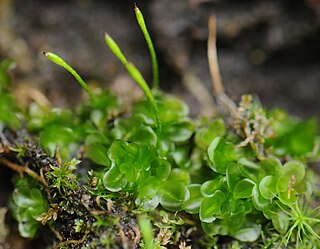
Oedipodium is the only genus of moss in the family Oedipodiaceae. It contains the single species Oedipodium griffithianum, the gouty-moss or Griffith's oedipodium moss. This species is distributed in cooler climates of Eurasia, as well as from Alaska, Washington state, British Columbia, Yukon, Greenland, Newfoundland, Tierra del Fuego and the Falkland Islands.

Halodule is a genus of plants in the family Cymodoceaceae described as a genus in 1841. It is widespread on tropical and semi-tropical ocean shores of all continents except Europe and Antarctica.

Spinulum annotinum, synonym Lycopodium annotinum, known as interrupted club-moss, or stiff clubmoss, is a species of clubmoss native to forests of the colder parts of North America, as well as Asia, and most of Europe. The genus Spinulum is accepted in the Pteridophyte Phylogeny Group classification of 2016, but not in other classifications, which submerge the genus in Lycopodium.
Isocarpha (pearlhead) is a genus of flowering plants in the family Asteraceae. They are native to Mexico, Central America, the West Indies, and northern South America, with the range of one species extending north into the United States.

Phyllospadix, commonly known as surfgrass, is a genus of seagrass, a flowering plant in the family Zosteraceae, described as a genus in 1840. Phyllospadix grows in marine waters along the coasts of the temperate North Pacific.

Acanthocladium dockeri is a critically endangered species of the family Asteraceae that belongs to the monotypic genus Acanthocladium. It is commonly known as spiny everlasting or spiny daisy. It is native to Australia, and is found around the South Australian town of Laura.
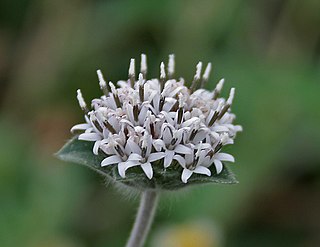
Lagascea is a genus of flowering plants in the family Asteraceae. It occurs primarily in Mexico, but some species extend into Central America and one reaches north into the western United States. One species, L. mollis, has been widely introduced to other localities around the tropics and subtropics.
Flatbergium is a genus of moss with 2 accepted species. Flatbergium sericeum and Flatbergium novo-caledoniae, originally described as species of Sphagnum, are now considered part of a separate genus on the basis of genetic differences.

Celtis ehrenbergiana, called the desert hackberry or spiny hackberry, is a plant species that has long been called C. pallida by many authors, including in the "Flora of North America" database. It is native to Arizona, Florida, New Mexico and Texas, and to Latin America as far south as central Argentina. It grows in dry locations such as deserts, brushlands, canyons, mesas and grasslands.

Ptychomitrium is a widespread genus of mosses found in many parts of the world.

Anthaenantia is a New World genus of plants in the grass family, native to North and South America including the West Indies. The genus name is sometimes spelled Anthenanthia or Anthenantia.
Howard Alvin Crum was an American botanist dedicated to the study of mosses, and was a renowned expert on the North American bryoflora.

Fissidens limbatus commonly known as Herzog's pocket-moss, is a moss in the family Fissidentaceae. This species is found growing in high elevations in tropical America in addition to the US, Mexico and Canada. Montagne first collected F. crispus in 1838.















